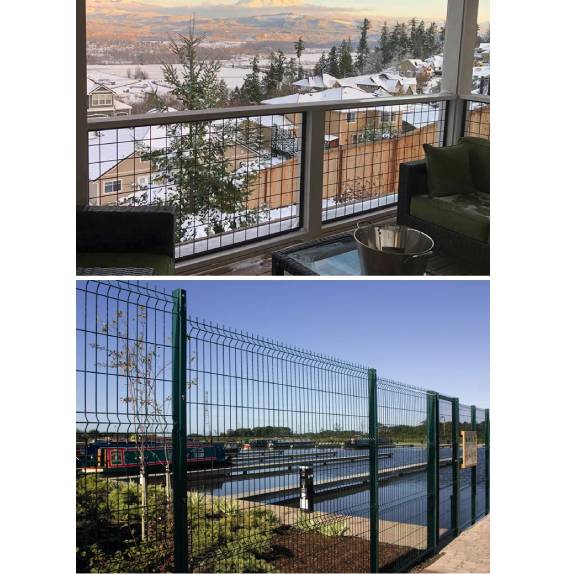Choosing the Right Nails for Pressure Treated Wood Framing Projects
Framing Nails for Pressure-Treated Wood A Comprehensive Guide
When it comes to building structures that can withstand the elements, framing nails play a critical role, especially in projects utilizing pressure-treated wood. As homeowners and builders increasingly employ pressure-treated wood due to its durability and enhanced resistance to decay, understanding the best practices for using framing nails with this material becomes essential.
What is Pressure-Treated Wood?
Pressure-treated wood is timber that has been infused with chemical preservatives to help protect it from rot, insects, and other environmental factors. This treatment process involves placing wood in a vacuum chamber where chemical preservatives are forced into the wood fibers. Common applications of pressure-treated wood include decks, fences, and outdoor structures where exposure to moisture and pests is a concern.
Why Choose the Right Nails?
Using the right framing nails for pressure-treated wood is vital for several reasons
1. Corrosion Resistance The chemicals used in pressure-treated wood can be corrosive, especially to certain types of metals. Standard nails may rust or degrade over time, compromising the structural integrity of the project. Therefore, it is essential to select nails that can withstand these harsh conditions.
2. Structural Integrity Nails specifically designed for use with pressure-treated wood ensure that the connections made during framing remain strong and secure. Proper nail selection contributes to the overall stability and longevity of the structure.
3. Aesthetic Considerations Although typically not the primary concern, the finish of the nails used can also impact the aesthetics of a completed project. Choosing the right color and finish can enhance the overall appearance of your work.
Types of Nails for Pressure-Treated Wood
When framing with pressure-treated wood, consider the following types of nails
framing nails for pressure treated wood

1. Hot-Dipped Galvanized Nails These nails are coated in a layer of zinc to enhance corrosion resistance. They are highly recommended for pressure-treated wood applications, particularly in moisture-prone areas. The hot-dipped process creates a thicker coating, making these nails much more durable against rust and decay.
2. Stainless Steel Nails For projects that demand superior corrosion resistance, stainless steel nails are the best choice. While they are more expensive than galvanized options, they offer exceptional strength and resist rust completely, making them ideal for coastal or water-exposed environments.
3. Polymer-Coated Nails Another option is polymer-coated nails, which are designed with a special coating to improve their resistance to corrosion. These nails are also easier to drive into the wood compared to standard options due to their friction-reducing surface.
Nail Size and Length
Selecting the right size and length of nails is crucial for ensuring they penetrate deeply enough into the wood for a secure hold. Generally, 2.5-inch to 3.5-inch nails are recommended for framing pressure-treated wood. The rule of thumb is to choose nails that are at least three times the thickness of the material being joined. For example, if you're joining two 2x4s together, a 3.5-inch nail is a suitable choice.
Installation Tips
To ensure the best results when framing with pressure-treated wood, keep the following tips in mind
- Pre-drilling While pressure-treated wood is often dense, pre-drilling holes can prevent splitting, especially in more delicate applications or with larger nails. - Spacing Follow local building codes regarding nail spacing to ensure maximum strength and integrity. Typically, nails should be placed 16 inches on center.
- Avoid Over-driving Be careful not to overdrive nails, as this can weaken the wood fibers surrounding the nail, reducing its holding power.
Conclusion
Using the right framing nails for pressure-treated wood is integral to achieving a durable and secure structure. Whether you opt for hot-dipped galvanized, stainless steel, or polymer-coated nails, understanding their characteristics and proper installation techniques is crucial to your project's success. As you plan your next outdoor project, make an informed choice to ensure that your work stands the test of time, savoring the benefits of pressure-treated wood reinforced by quality fastening solutions. Remember, the strength of a building lies not only in the materials themselves but also in the craftsmanship and attention to detail applied during construction.
-
Innovations in Razor Barbed Wire Design TechnologyNewsAug.11,2025
-
Roofing Nail Compatibility with Different Metal Roof TypesNewsAug.11,2025
-
Welded Wire Mesh for Rockfall Protection BarriersNewsAug.11,2025
-
Galvanized Wire Corrosion Resistance TestingNewsAug.11,2025
-
3D Fence Solutions Preventing Bird CollisionsNewsAug.11,2025
-
Using Chain Link Fence for Urban Garden SupportNewsAug.11,2025




